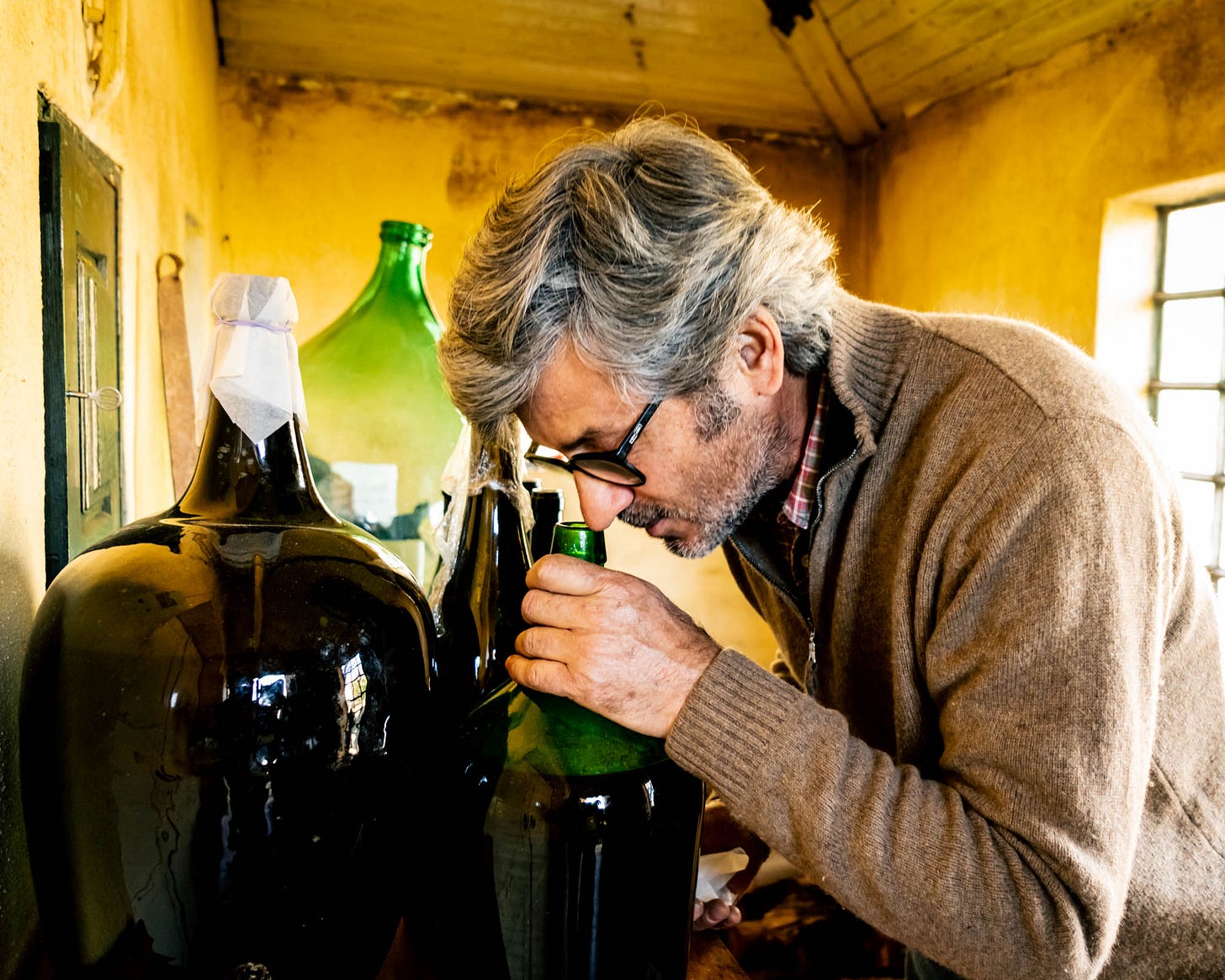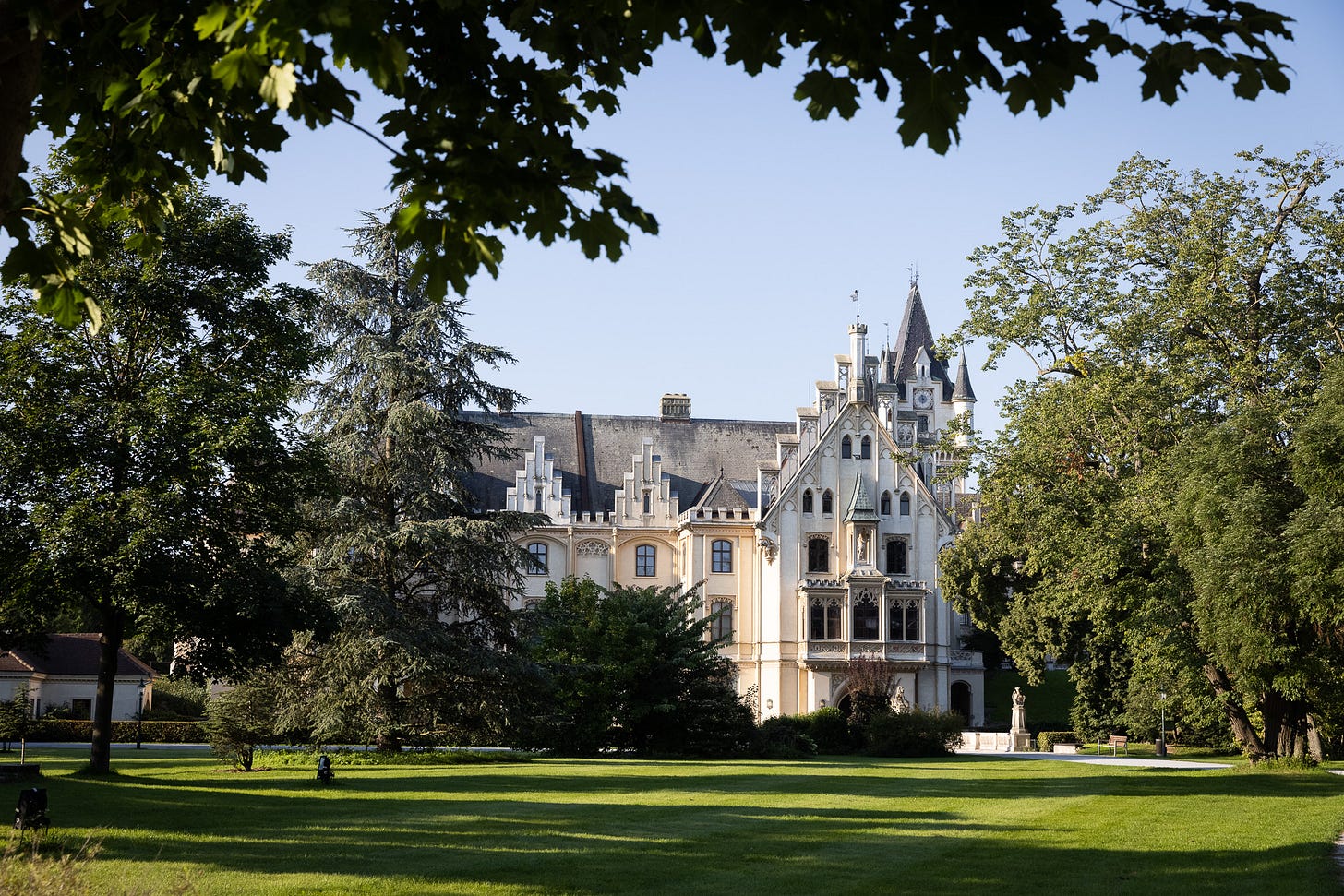Are These Austria's Top Wines?
My favourites from this year's Single Vineyard Summit, plus how to support João Tavares de Pina
Before I get into all things Austrian, a quick heads up about a Portuguese winemaker who needs and deserves your urgent support.
João Tavares de Pina has been one of the lynch-pins of low intervention winemaking in the Dão for over two decades. Last week, he and his wife Luisa saw their house, all their possessions and almost all of their vineyards go up in flames as one of the region’s huge wildfires came for them.
There is plenty to say about why these catastrophic events are becoming more common. See the Dão chapter in our book Foot Trodden for some background. For now, I urge you to buy as many bottles of João’s delicious wines as you possibly can. I just ordered a case. This is one of the best ways to support him as he tries to rebuild his livelihood. João still has stock to sell, plus 70% of the 2024 vintage that he managed to harvest before the fires. Here are some links to buy online:
In Portugal, or further afield on request: Os Goliardos (100% of their sales go direct to João at the moment)
In the Netherlands: Chabrol Wines (Amsterdam) or Punt 75 (Den Haag)
In the UK: Sager and Wine
Please share your favourite links or locations for buying João’s wines in your part of the world in the comments!
The Single Vineyard Summit and Why I Attend
Every year, I’m quizzed about why I choose to sacrifice a week of my life to attend the Österreichische Traditionsweingüter’s massive Single Vineyard Summit. The ÖTW and its annual tasting summation have the whiff of something rather classic. There is not an orange wine to be seen. Why would an avowed natural wine fan waste their time here?
The answer is simple. With the possible exception of the biennial VieVinum fair, and Karakterre, there is no better way to take a barometer reading of the entire country. The SVS now includes wines from almost every region in Austria1, as the ÖTW’s members now span Thermenregion, Carnuntum and Vienna, in addition to the core lower Austria regions Kremstal, Kamptal, Traisenthal and Wagram. Guest regions complete the tasting deck: Leithaberg and Eisenberg DACs, the STK group of winemakers from Styria and Vinea Wachau.
In a country like Austria, where multi-generational family wineries are the norm, the lines between natural and conventional are not slavishly drawn. Different generations take their family’s estates in different directions. Wineries and winemakers evolve. The SVS annual tasting allows you to watch that process unfold year on year.
It’s thanks to the ÖTW and the Single Vineyard Summit that I first met Magdalena Haas, one of the bright young stars of the Kamptal - and via her, Matthias Warnung, another talented young grower. My first contact with Johannes Trapl, a biodynamic grower making expressive Grüner and Blaufränkisch in Carnuntum, was also at this event. The Single Vineyard Summit has enabled me to follow Markus Altenburger’s stylistic evolution over the last six years. And it opened my eyes to the evolving expression of the STK winemakers, many now working biodynamically and with low intervention in the cellar.
Of course it’s frustrating that only DAC2 approved single vineyard bottlings can be shown at this tasting - so Jurtschitsch’s Belle Naturelle, Geyerhof’s Hofstudien or Heinrich’s Graue Freyheit do not make an appearance. But theoretically the single vineyard wines are the best of the best from these estates. And perhaps this is no more or less arbitrary a way to limit the number of wines than any other method. As it stands, there are 550 wines to taste within five days.
The focus on only single vineyard DAC wines - which also heavily limits the permitted grape varieties region by region - does level the playing field. Yes, many of these wines have to fit into a more classic mould if the winemaker wants to show origin and appellation on the label. Some are filtered, a minority are still made with selected yeasts and cold fermentation (banana, anyone?). But comparing a dozen expressions of Heiligenstein3 Riesling is enlightening. If you ever wanted to taste the effects of different farming and winemaking decisions, to understand how they can blur or even obliterate sense of place, the evidence is right here.
Gratifyingly, the number of organic or biodynamic certified wineries at this tasting increases each year. Looking back through my highest scores (yes we are required to score, I won’t get into a polemic about that here), the majority were for wines/wineries with either organic or biodynamic certification. That tells its own story. If you want precision, expression and exceptional wine, it all begins in the vineyard.
This year, I tasted around 400 wines in four days, sadly having to skip the Wachau day due to personal commitments. This herculean undertaking is only made possible by the brilliant organisation and super-focused format. Seated in comfort with six glasses, a spittoon and an army of winemakers who come and pour your chosen flight within minutes of it being ordered, these are optimum tasting conditions.
Here are the wines that rocked my world this September, organised by region. I proudly also offer my hastily snapped bottle shots to give you that verité feel.
My Favourite Wines From the 2024 Tasting, Part 1
I scored wines out of 20 for this tasting4. I prefer not to publicise exact scores5, but everything listed below is basically exceptional.
Part 1 covers the ÖTW member regions. Next week, look out for Part 2 with wines from the guest regions Leithaberg, Eisenberg and Styria.
Keep reading with a 7-day free trial
Subscribe to The Morning Claret to keep reading this post and get 7 days of free access to the full post archives.



